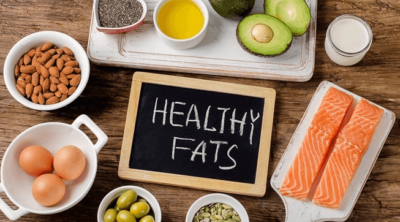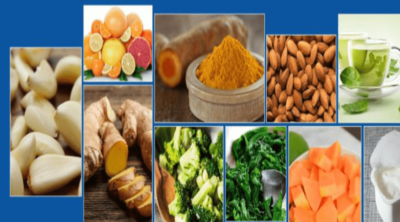
Incorporating edible insect protein in your diet is the best way to stay slim and fit. Surprised? Read this Buzzle article to know more about cricket flour nutrition facts and health benefits.
Did You Know?
The Food and Agricultural Organization of the United Nations has not only identified about 2,000 types of edible insect species, but has also released a report about the health benefits of consuming insects. According to the organization, insects are a good, most sustainable, and ecologically viable source of protein, fiber, vitamins, minerals, and healthy fats.
One may find the idea of consuming creepy, crawly, and winged creatures ridiculous. But it should be noted that insects have always been a part of human diets. Most research suggests that our ancestors were eating insects and berries, not meat with every meal. Considering the rising cost of animal protein, consumption of insects (entomophagy) can be a good alternative to conventional livestock and other protein sources. Beetles, caterpillars, bees, wasps, ants, grasshoppers, locusts, and crickets are some of the most commonly consumed insects.
Cricket Flour Protein Powder
As the name suggests, the flour is made from crickets, for example, Acheta domestica or house cricket. To increase your protein intake, you don’t have to consume a whole insect. Insects like crickets are pulverized into powder on a commercial basis. These days, cricket flour protein bars are available in the market. They are delicious (they don’t contain any legs or antennae!) and are available in different flavors. You can have cricket flour cookies and chips as snacks. Crickets that are raised for human consumption (they are also bred as food for pets) are fed an organic grain mixture. They are raised in clean hygienic conditions. 100 g cricket flour is available for less than $10. To start with, you can add a small amount of cricket flour to your diet and see how you’re doing. You can increase the amount gradually.
Cricket Flour Nutrition Facts
✦ Insects are low in carbs (100 g of crickets contain only 5 g of carbohydrates) and high in protein, fat, vitamin, fiber, and minerals (calcium, iron, zinc, etc.). As you know, vitamin B12 is obtained only from animal sources.
✦ The United Nations Food and Agricultural Organization has described insects like crickets, grasshoppers, and mealworms as ‘nutritional powerhouses’ in its 2013 study report. These insects are rich in essential amino acids lysine and tryptophan, which are present in fairly low quantities in cereal proteins like soy.
✦ 100 g of crickets contain 121 calories, 75.8 milligrams of iron, and 12.9 g protein. (100 g of chicken or beef contains about 28 g protein.)
✦ Manufacturers of cricket flour claim that dried crickets contain more protein than dried beef/chicken. Cricket flour is 69% protein by dry weight, compared to 29% for sirloin, or 31% for chicken.
✦ According to The New York Times, crickets provide nearly as much calcium as milk.
Benefits of Cricket Flour
✦ Cricket flour is not an isolated protein source. So, it’s not highly processed. Insects are tasty and the manufacturer doesn’t have to mask the flavor with syrups and artificial sweeteners. The flour is 100% natural. It does not contain any preservatives, artificial colors, or flavors.
✦ It’s risky to collect insects from the wild. Some are toxic, while some may carry pesticides and microbes. Cricket flour is a good way to start with. You can add a small amount of the flour to something you’re making.
✦ Crickets (like other insects) are easily available. They are abundant and are present in various types of habitat. They can be harvested in the wild. Villagers can earn money through this. Although a newer concept, insect farming is gaining popularity in various parts of the world, especially in temperate zones. This can offer employment and cash income.
✦ It’s difficult to feed a steak to a kid, but you can easily feed him/her a cookie or a protein bar that contains cricket flour.
✦ Insect cultivation can be carried out in both urban and rural areas. It requires minimal space. Insects have a high reproductive rate. They are easy to manage and are easily transportable too. With minimal training, one can start earning money in a short period.
✦ According to the information presented by National Geographic, one hundred pounds of feed is required to produce 10 pounds of beef. With the same amount of feed, one can produce at least 40 pounds of crickets. According to the Food and Agricultural Organization of the United Nations, crickets need six times less feed than cattle, four times less than sheep, and twice less than pigs and broiler chickens to produce the same amount of protein.
✦ Very little fuel (for transport) is required for farming and harvesting insects. To raise cattle, sheep, pigs, or chicken, you need to have a large piece of land too. Growing grains and vegetables is also more expensive than raising crickets.
✦ Crickets need less food and water to produce more product.
✦ They also emit considerably fewer greenhouse gases than most livestock.
✦ Crickets, along with other minilivestock can help improve local diets. They can provide food in times of food scarcity.
✦ No significant health problems have been reported after consumption of edible insects.
To meet the food and nutrition challenges of today, it is necessary to find new ways of producing healthy food. The idea of eating insects may not be very appealing, but insects are nutritious, cheap, light, and easily accessible. With a quick growth rate, insects can help counter the nutritional deficiencies and can provide emergency food during natural disasters.

